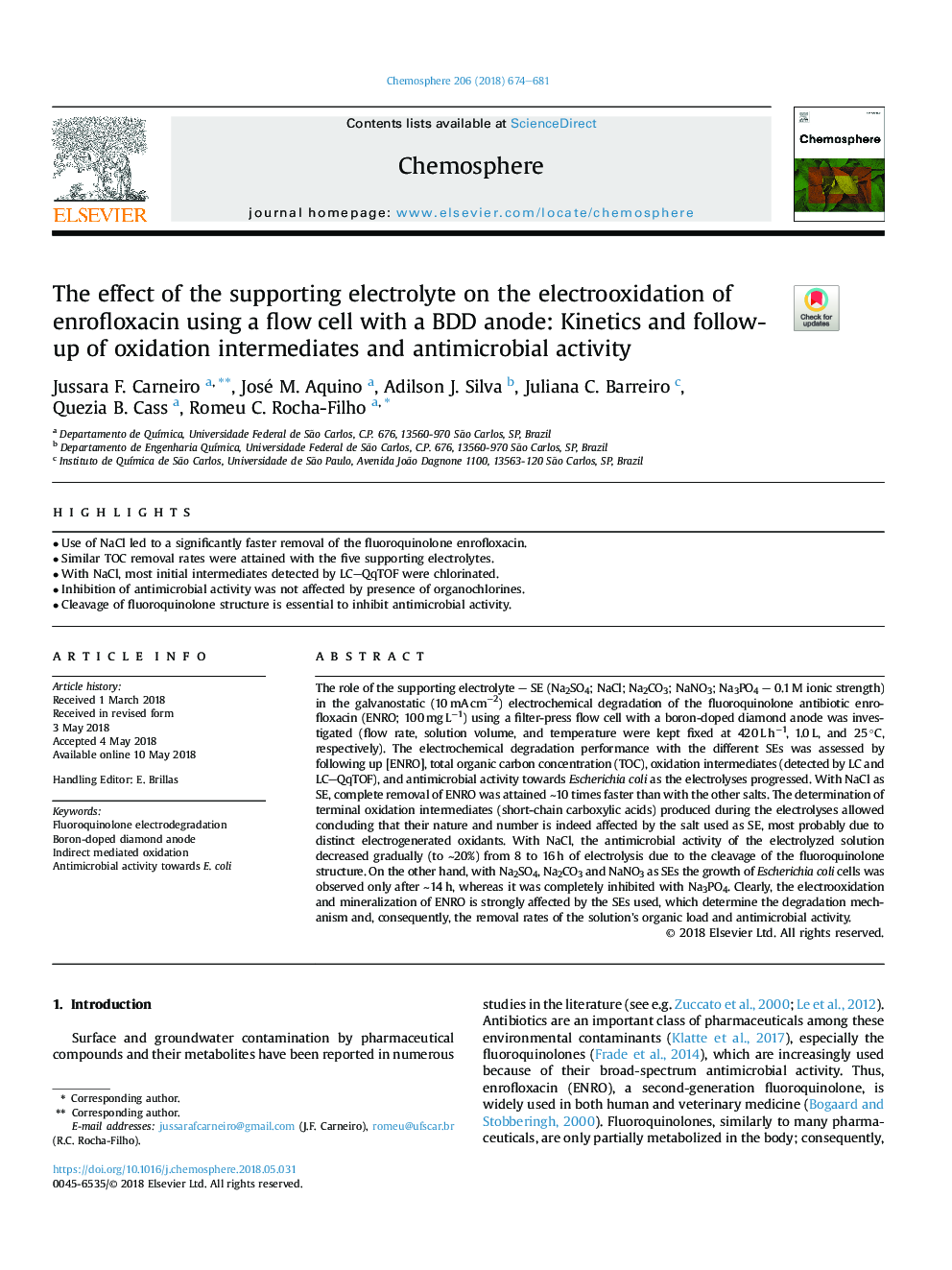| کد مقاله | کد نشریه | سال انتشار | مقاله انگلیسی | نسخه تمام متن |
|---|---|---|---|---|
| 8850977 | 1618765 | 2018 | 8 صفحه PDF | دانلود رایگان |
عنوان انگلیسی مقاله ISI
The effect of the supporting electrolyte on the electrooxidation of enrofloxacin using a flow cell with a BDD anode: Kinetics and follow-up of oxidation intermediates and antimicrobial activity
دانلود مقاله + سفارش ترجمه
دانلود مقاله ISI انگلیسی
رایگان برای ایرانیان
کلمات کلیدی
موضوعات مرتبط
علوم زیستی و بیوفناوری
علوم محیط زیست
شیمی زیست محیطی
پیش نمایش صفحه اول مقاله

چکیده انگلیسی
The role of the supporting electrolyte - SE (Na2SO4; NaCl; Na2CO3; NaNO3; Na3PO4 - 0.1â¯M ionic strength) in the galvanostatic (10â¯mAâ¯cmâ2) electrochemical degradation of the fluoroquinolone antibiotic enrofloxacin (ENRO; 100â¯mgâ¯Lâ1) using a filter-press flow cell with a boron-doped diamond anode was investigated (flow rate, solution volume, and temperature were kept fixed at 420â¯Lâ¯hâ1, 1.0â¯L, and 25â¯Â°C, respectively). The electrochemical degradation performance with the different SEs was assessed by following up [ENRO], total organic carbon concentration (TOC), oxidation intermediates (detected by LC and LC-QqTOF), and antimicrobial activity towards Escherichia coli as the electrolyses progressed. With NaCl as SE, complete removal of ENRO was attained â¼10 times faster than with the other salts. The determination of terminal oxidation intermediates (short-chain carboxylic acids) produced during the electrolyses allowed concluding that their nature and number is indeed affected by the salt used as SE, most probably due to distinct electrogenerated oxidants. With NaCl, the antimicrobial activity of the electrolyzed solution decreased gradually (to â¼20%) from 8 to 16â¯h of electrolysis due to the cleavage of the fluoroquinolone structure. On the other hand, with Na2SO4, Na2CO3 and NaNO3 as SEs the growth of Escherichia coli cells was observed only after â¼14â¯h, whereas it was completely inhibited with Na3PO4. Clearly, the electrooxidation and mineralization of ENRO is strongly affected by the SEs used, which determine the degradation mechanism and, consequently, the removal rates of the solution's organic load and antimicrobial activity.
ناشر
Database: Elsevier - ScienceDirect (ساینس دایرکت)
Journal: Chemosphere - Volume 206, September 2018, Pages 674-681
Journal: Chemosphere - Volume 206, September 2018, Pages 674-681
نویسندگان
Jussara F. Carneiro, José M. Aquino, Adilson J. Silva, Juliana C. Barreiro, Quezia B. Cass, Romeu C. Rocha-Filho,